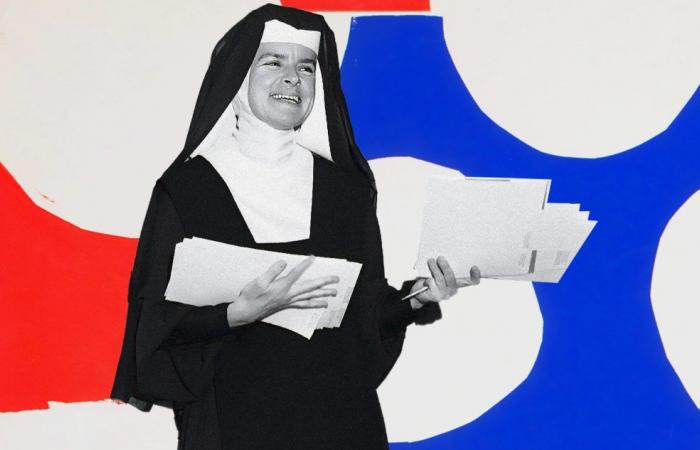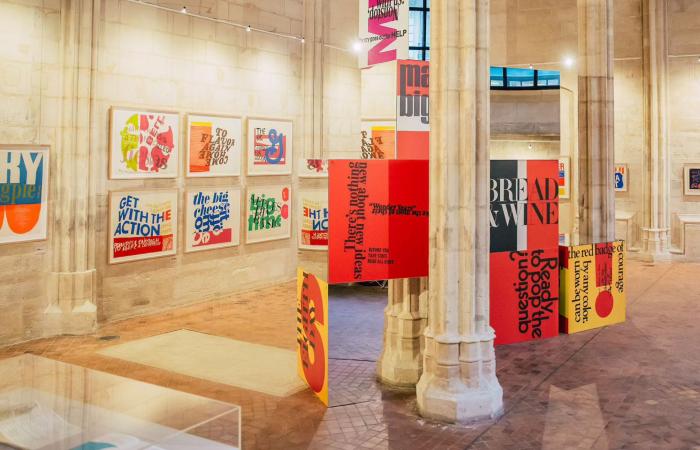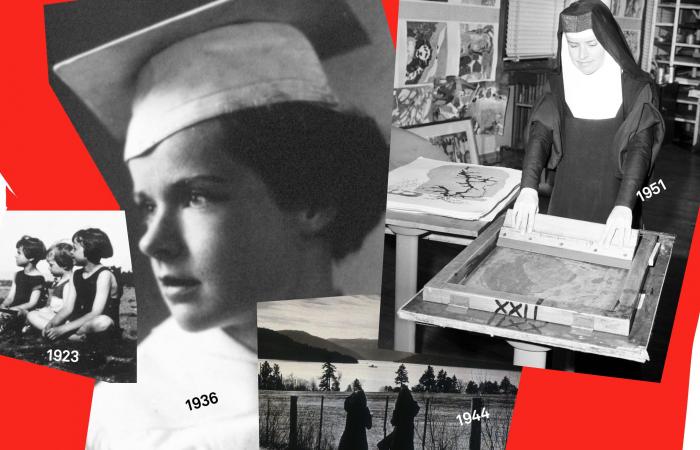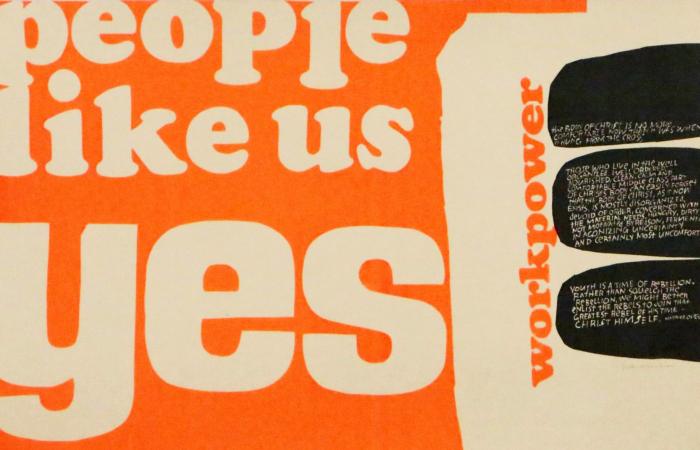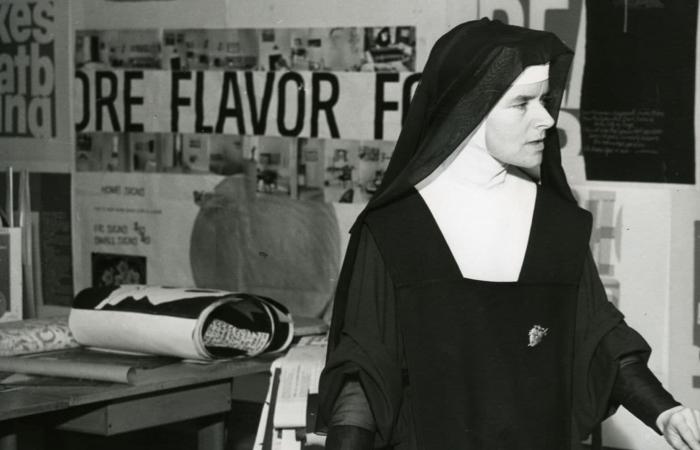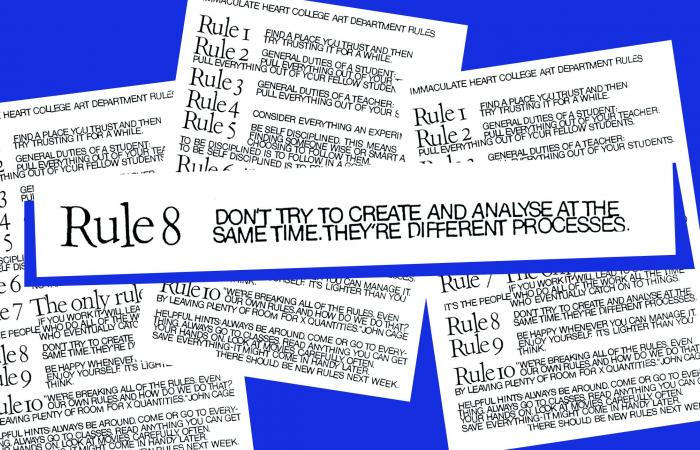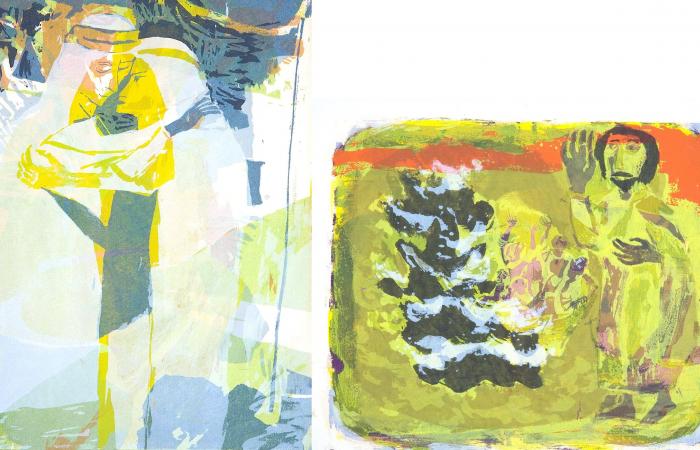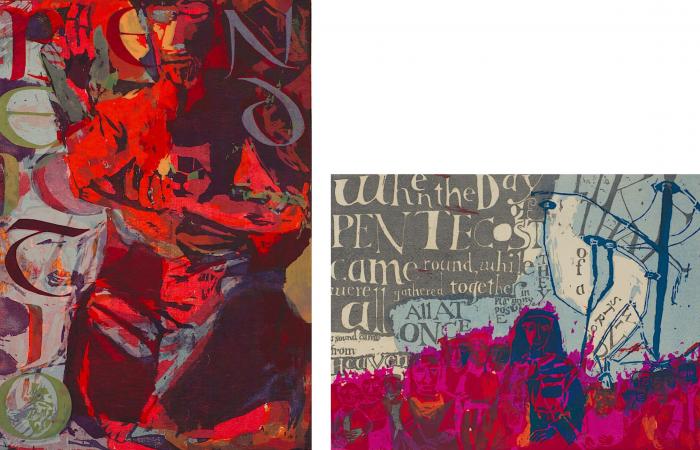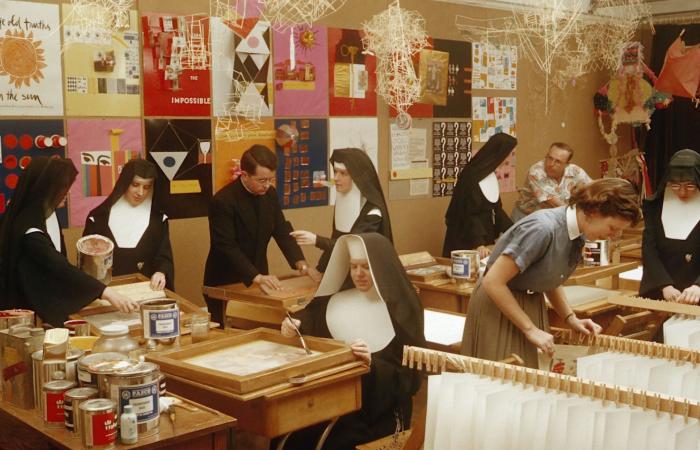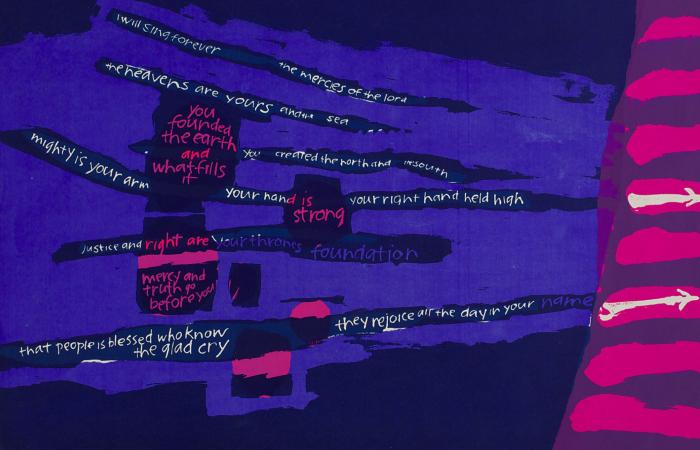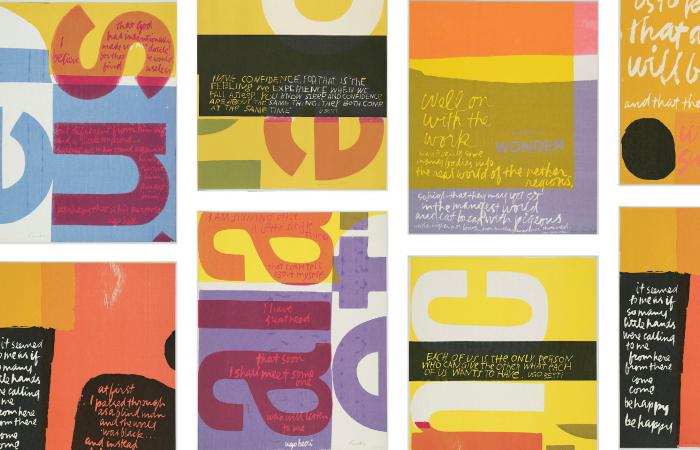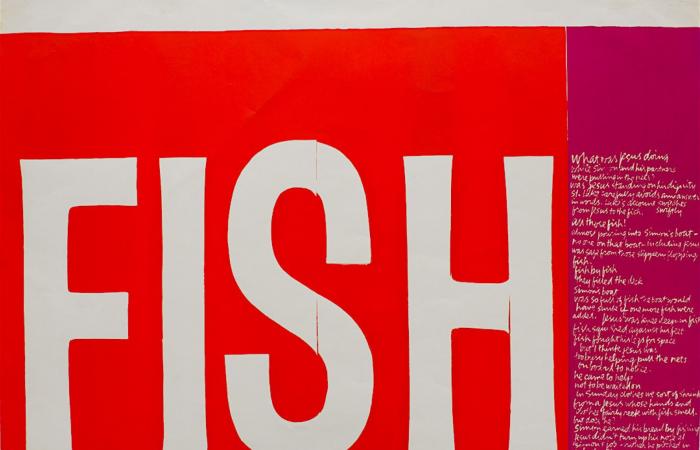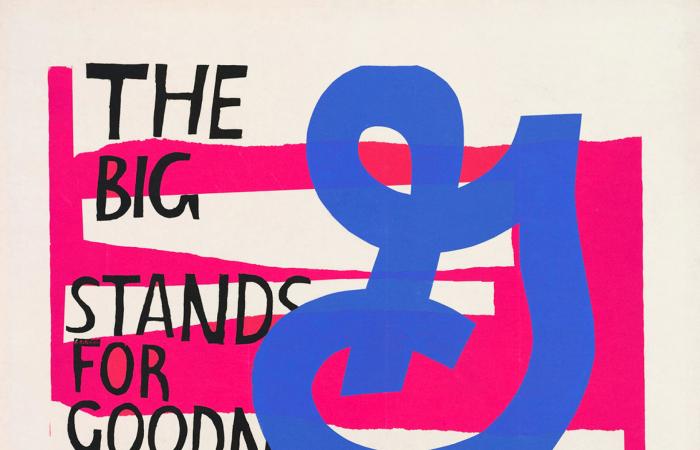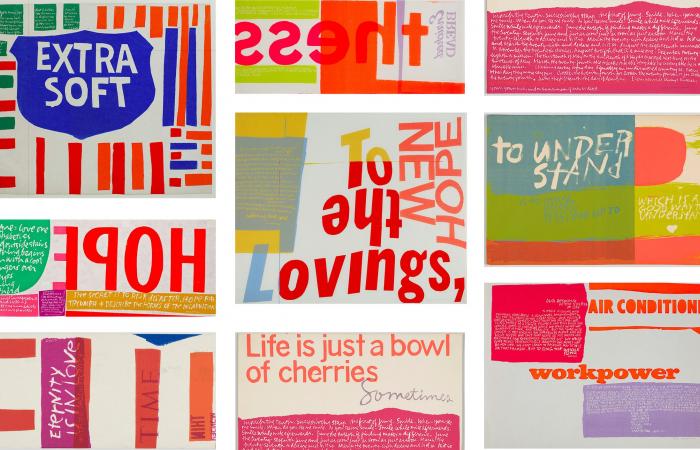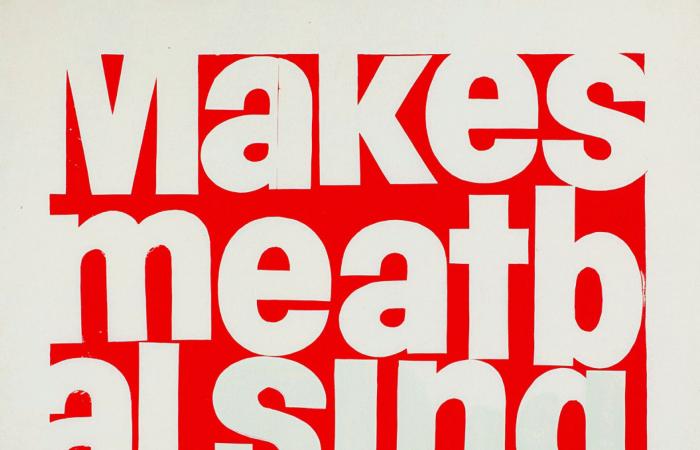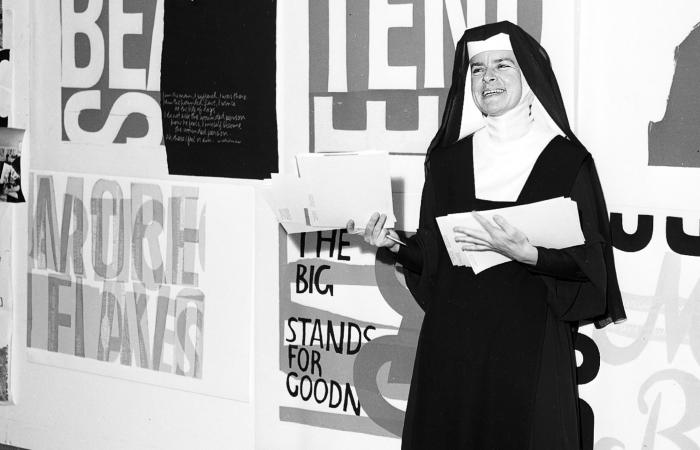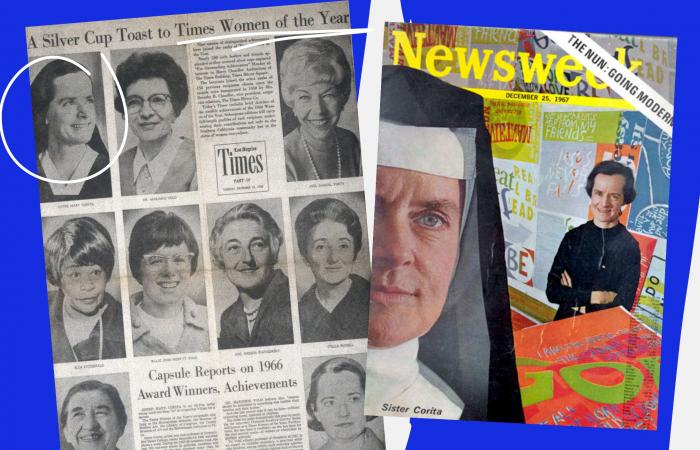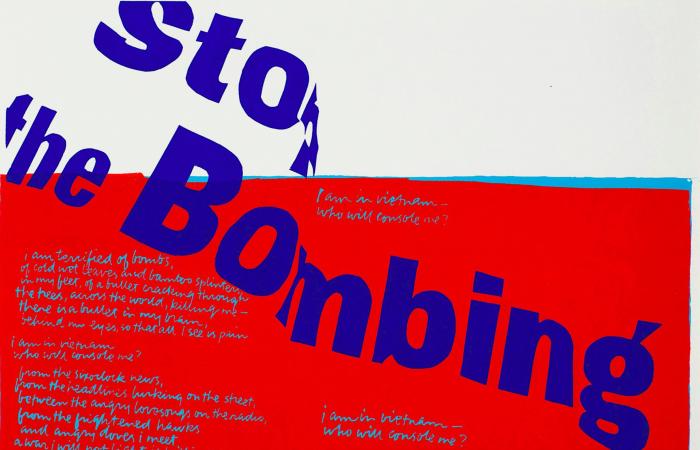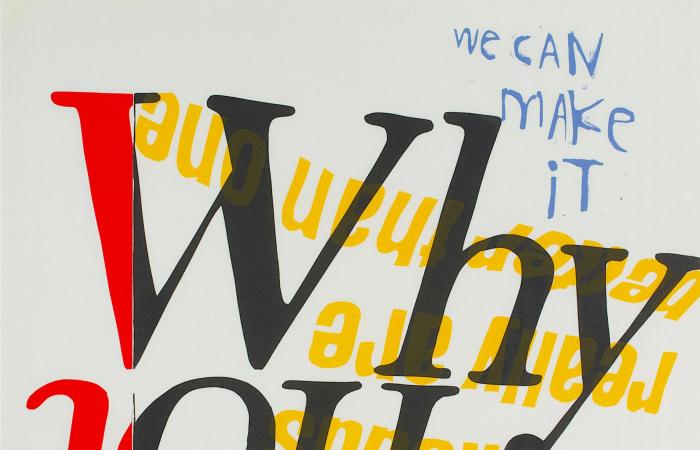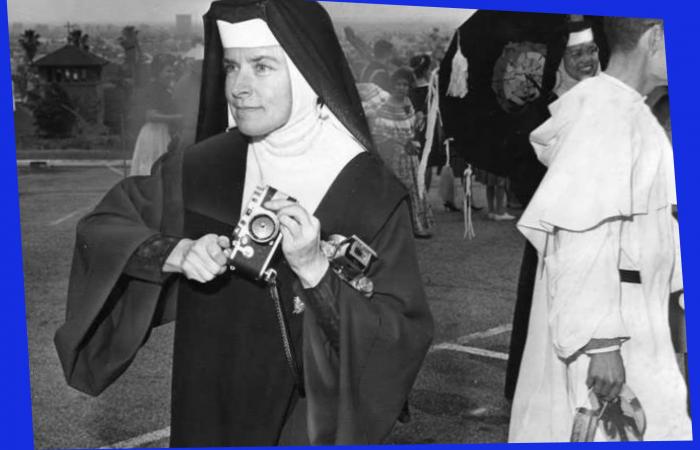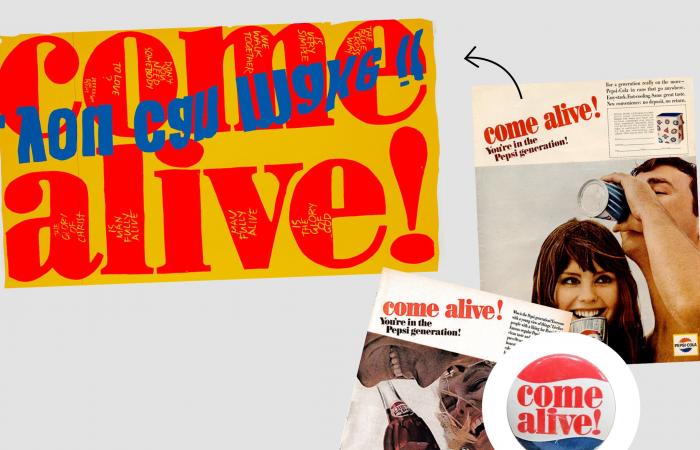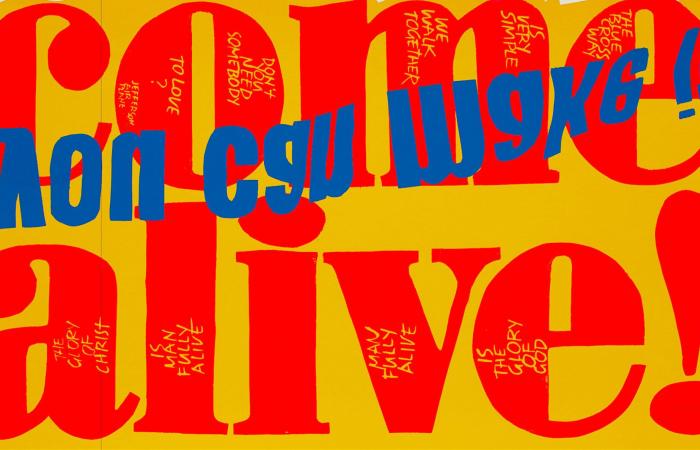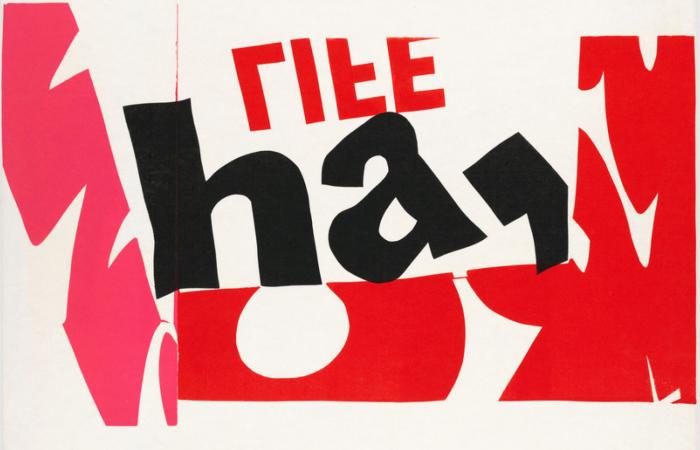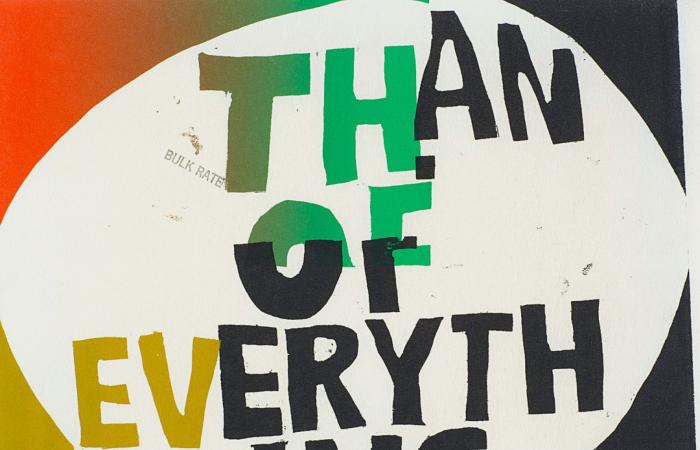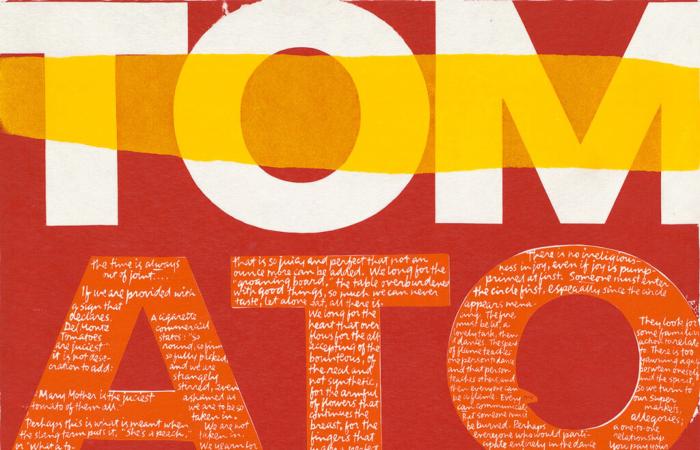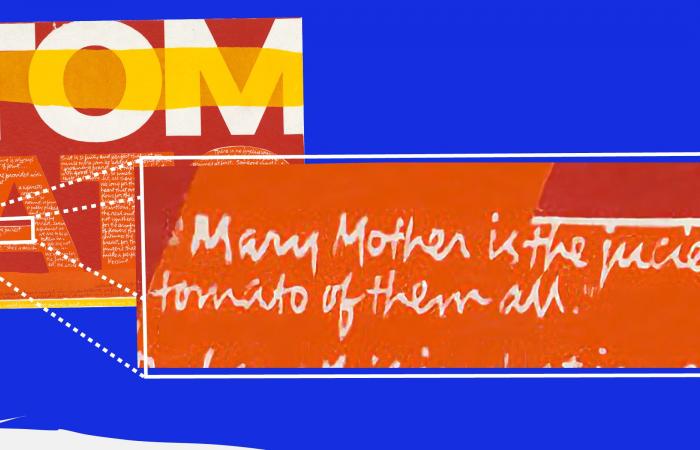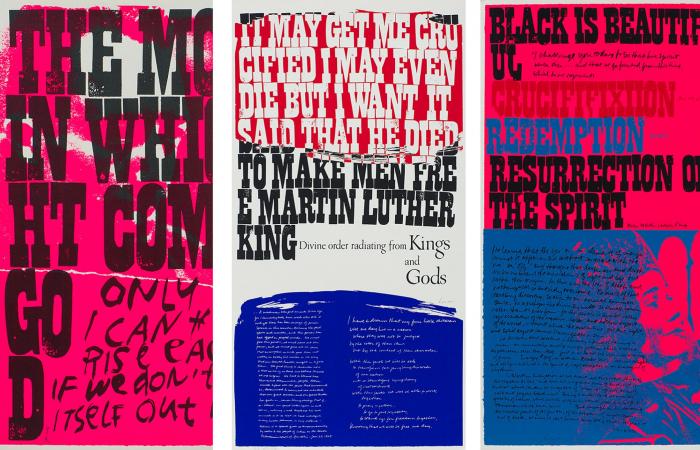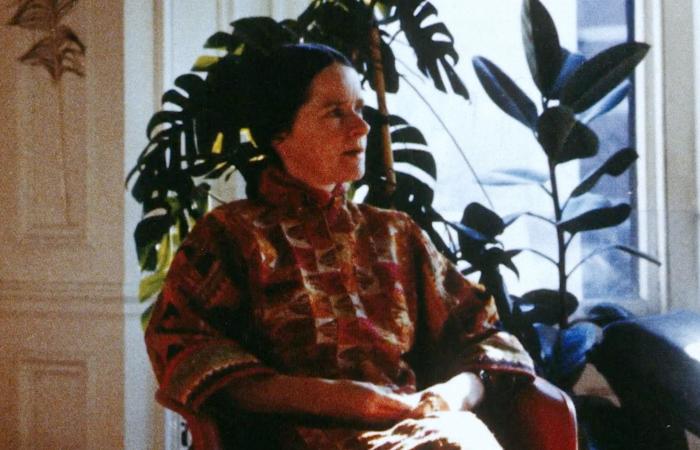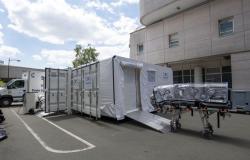Corita Kent (1918-1986)
She is an atypical woman, surprisingly little known in France.
At a time when Pop art was gaining global recognition, the innovative work of certain women artists was often neglected, or even deliberately forgotten. With a cold and distant approach to the American consumer society of the 60s, Andy Warhol, Robert Rauschenberg or Claes Oldenburg occupied the artistic scene. For her part, Sister Corita Kent will bring a parallel effervescence, taking a joyful and colorful counter to Pop Art.
By appropriating advertising graphic writing for the benefit of messages of faith and peace, tolerance and respect, she will develop a unique and personal work merging religion and modernity.
This fall, the Bernardins College in Paris, hosts a major exhibition by Corita Kent, “The Joyful Revolution”. It took almost half a century for us to (re)discover the innovative work of a committed artist, activist and teacher.

Frances Elizabeth Kent was a native of Iowa. His family settled in the Hollywood area in 1923.
In 1936, an 18-year-old young woman joined the orders, the Sisters of the Immaculate Heart of Mary, the largest religious community in Los Angeles. She will take the name Sister Mary Corita. In 1947, she joined the artistic section of the establishment. In 1951, Corita Kent obtained her master’s degree in art history in medieval sculpture, and began teaching screen printing. In 1964, she became an art professor at the Immaculate Heart College.




Corita Kent’s 8 rules
From her experience as a teacher, she established ten now famous rules. “Some Rules for Students and Teachers”, to the point that many will attribute them to John Cage. Several will be included in Brian Eno’s “Oblique strategies”.
• RULE 1: Find a place you trust, and then try to trust it for a while.
• RULE 2: General duties of a student — to get everything there is to get from his teacher; getting everything there is to get out of his classmates.
• RULE 3: General duties of a teacher — to get everything there is to get out of his students.
• RULE 4: Treat everything as an experience.
• RULE 5: Be self-disciplined — this means finding someone wise or intelligent and choosing to follow them. To be disciplined is to follow in a good way. Self-discipline means following in a better way.
• RULE 6: Nothing is a mistake. There is no victory or failure, there are only successes.
• RULE 7: The only rule is work. If you work, it will lead to something. It’s the people who work all the time who eventually figure things out.
• RULE 8: Don’t try to create and analyze at the same time. They are completely different processes.
• RULE 9: Be happy whenever you can. Things are lighter than you think.
• RULE 10: “We are breaking all the rules. Even our own rules. And how do we get there? By giving us all the latitude necessary to do so. » (John Cage)
• Useful tips: Always be everywhere. Try all kinds of things. Attend all your classes. Read everything you can get your hands on. Watch every movie you can, carefully. And KEEP EVERYTHING: it may come in handy later.
And next week there will be new rules.

At the beginning of the 1950s, Sister Corita Kent developed artistic work using an industrial production technique, little used at the time in the field of plastic arts, screen printing.
It is inspired by biblical passages, often referring to Byzantine icons. His first creations exude a scent “ neo-gothic ».


In 1962, when she discovered the screen prints of Campbell’s Soup cans at the Ferus Gallery in Los Angeles.Andy Warholit’s the revelation. She totally ignites the Pop Art revolution. Recovers elements of commercial culture, brands, logos, typography and diverts slogans to deliver messages of peace. She espouses the libertarian spirit of the counterculture of the time. And then everything goes very quickly.
« — I like to think of myself, and I would like you to think of me that way, as someone halfway between a landscape painter and a sign painter. If you do this, I think in the end you will realize that there is not much difference between the two. », specified Corita during a conference presenting his work in 1964.
In the mid-1960s, the sister’s workshop was at its peak with production being exhibited in Los Angeles galleries. Then it will be all over the United States.







For six years, Corita Kent was entrusted with the organization of the procession of St Mary’s Day in the streets of Los Angeles. This procession designed to break with what existed will take the form ofa happy happening where students, sisters and priests parade to music, carrying screen-printed signs and collages, colorful banners, flowers, balloons…


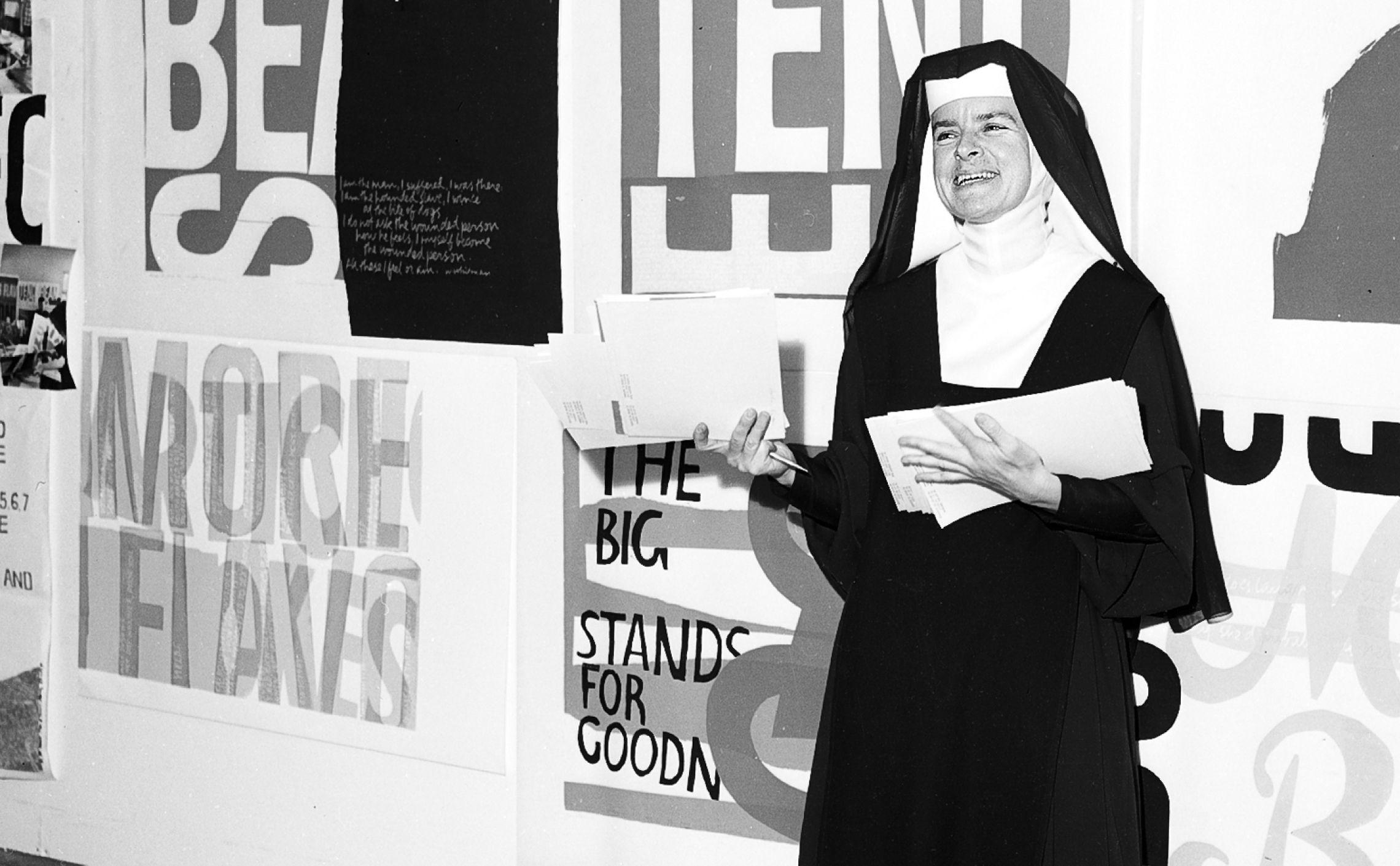


Women of the year 1966
In 1966, the Los Angeles Times listed her among the 9 most important women of the year (top left). Alongside Ella Fitzgerald and Billie Jean King…
The following year, Newsweek magazine put it on the front page for the Christmas holidays, with this title “ The nun in the age of modernity “. Because Sister Corita Kent was not only an artist, she was also an activist very concerned about the civil rights movements, the war in Vietnam and women’s rights.




Alongside her production of screen prints, Sister Corita Kent practiced photography. She regularly went with her students to the streets of Los Angeles, to supermarkets in search of graphic designs that she spotted on billboards and commercial signs. There are thousands of slides that will serve as raw material and a source of inspiration.

A work from 1967, “Come Alive”, clearly reflects the particularity of his work. In this poster, she appropriates the slogan of a Pepsi Cola advertisement, very popular at the time “Come Alive” “You’re in the Pepsi Generation”. Then, using an overhead projector, she will intervene directly on the silk screen of the silkscreen frame. This will allow it to play mirror distortions of “You can make it” caused by the projection.
The advertising “Come Alive” in bold typography will serve as a support for handwritten text. Downhis marked interest in religion and the Glory of Christ! “The glory of Christ is man fully alive man fully alive is the glory of God”. And then, echoing from above, the lyrics of a Jefferson Airplane song “The blue cross way is very simple we walk together dont you need somebody to love.”

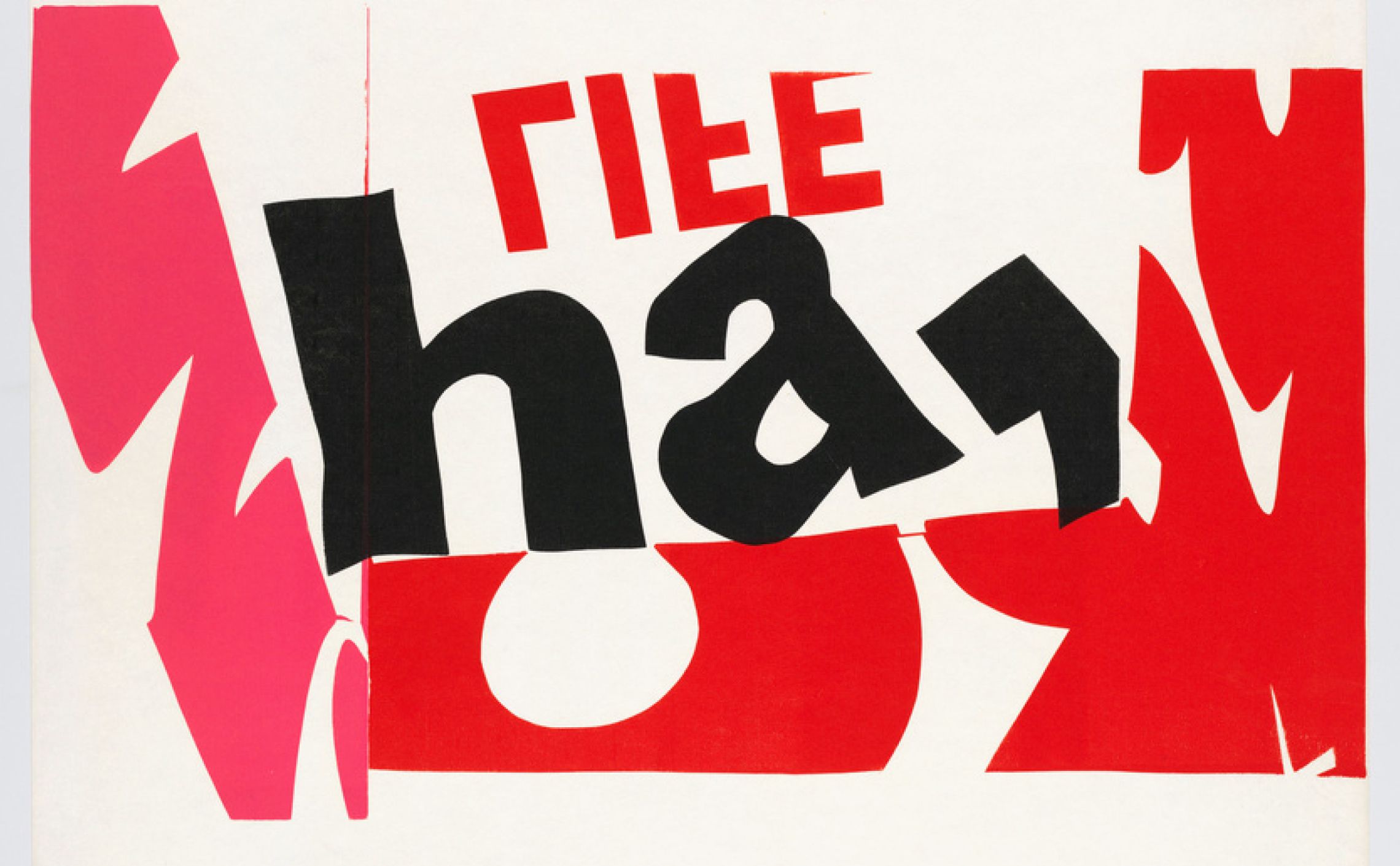
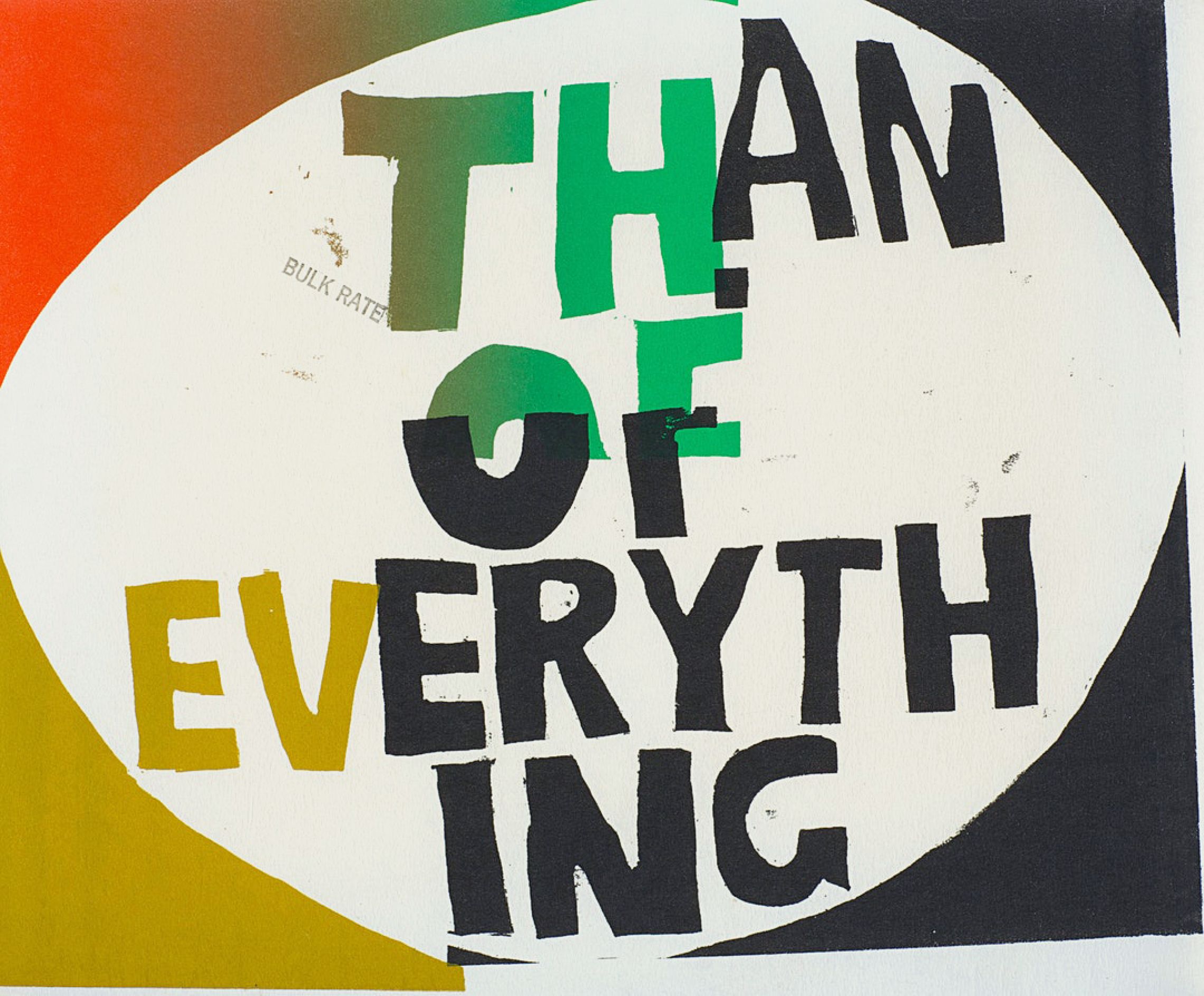

Flower power and tomato !
In 1968, following a controversy with a cardinal, she distanced herself from the Catholic Church. In one of her controversial posters, “Tomato”, she had written in the form of an advertising slogan “Marie is the juiciest of all tomatoes.”Here again a mix between advertising slogan and religious universe… Except that this was too much for the ecclesiastical hierarchy.

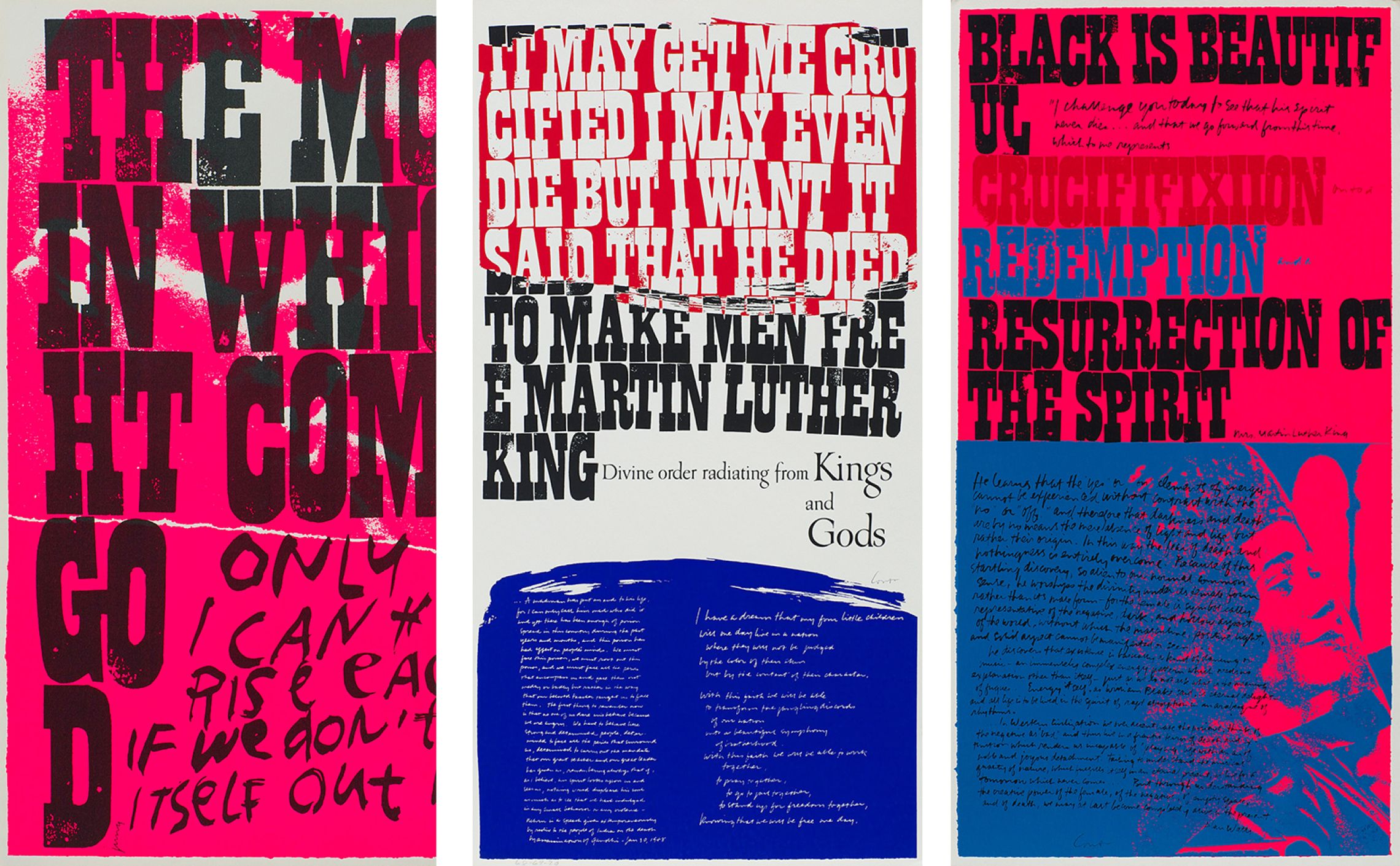
In the early 1970s, while suffering from cancer, she moved to the east coast, to Boston, and entered a period of extremely prolific production where she began to diversify techniques.
It was at this time, in 1971, that she created the “Rainbow Swash”, a painting on a liquid gas storage tank in Boston. “ A sign of hope that pushes you to continue. » An immense rainbow of peace and love that has become, over the years, a must-see in the city.
In 1985, taking up the idea of the Rainbow, she designed a stamp for the American post office, “Love is hard work”. One of the best-selling stamps in the world with 700 million copies sold.



In 1985, taking up the idea of the Rainbow, she designed a stamp for the American post office, “Love is hard work”. One of the best-selling stamps in the world with 700 million copies sold.

It was in September 1986 that Sister Corita Kent died.
Today, the Corita Art Center located on the Immaculée campus Heart High School in Los Angeles preserves and promotes the work of the sister. Although present in the public collections of the Frac d’Ile-de-France, Pays de la Loire and Lorraine, Corita Kent’s work remains little distributed in France.
In 2018, the Allen gallery exhibited his work for the 100th anniversary of his birth, “Harness the sun”. The following year, in Brest, the Passerelle Contemporary Art Center presented some of his works.
This fall, in Paris, the Bernardins College hosts an exhibition by Corita Kent, “The Joyful Revolution”
from October 9 to December 21, 2024.
Edited by: François Chevret

